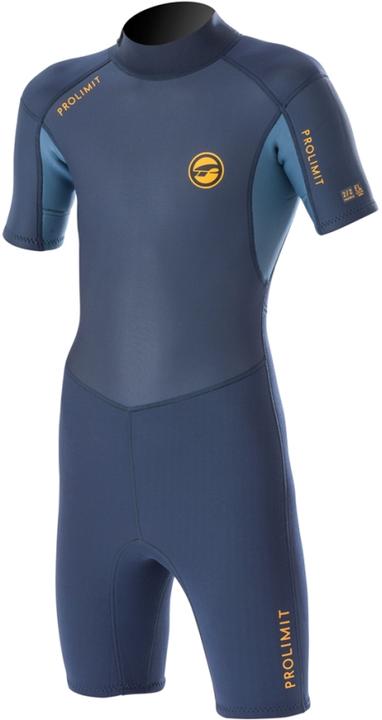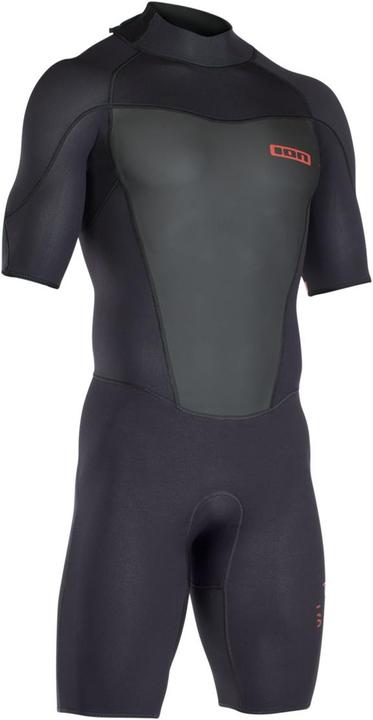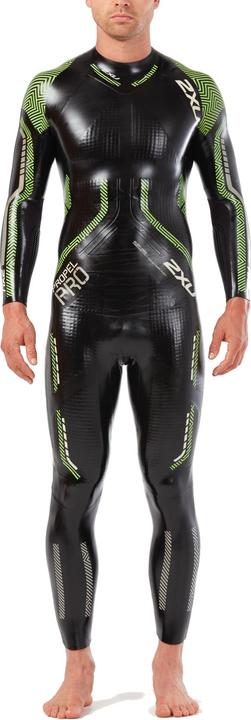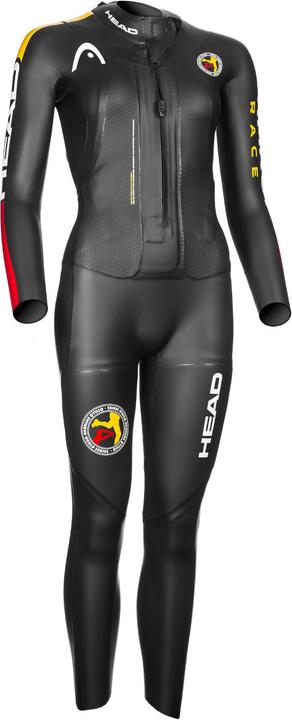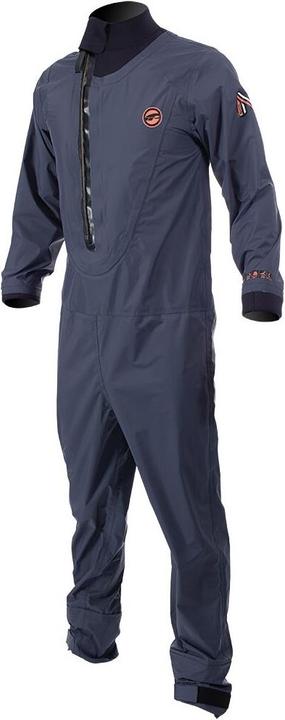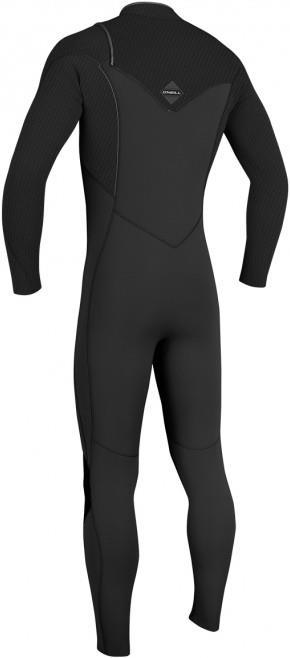
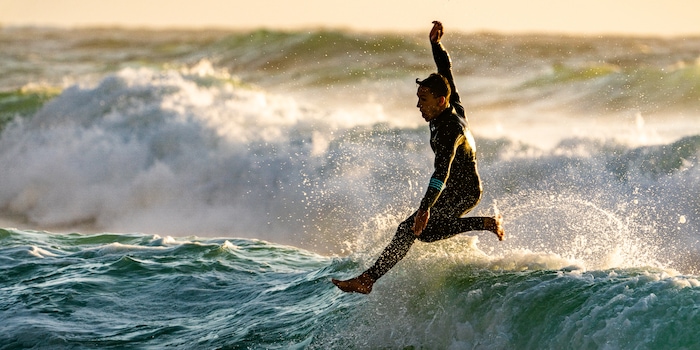
Give rubber? With pleasure! A little neoprene guide
Humans are not made for the water. No webbed feet, no gills, scales only occasionally and unfortunately not warming. Wetsuits are available so that you can enjoy water sports for longer. Here is an overview.
At 18, we wanted to be surfers. We were a couple of good mates, were on holiday in France and knew nothing about anything. Instead, we had a borrowed board, the Atlantic and a pair of neon-coloured 90s swimming shorts, which we used to plunge into the water and let the waves beat us up. A short time later, we were sitting on the beach, freezing, with bloody chests and chafed thighs. I've appreciated wetsuits ever since. Not only because they protect against injuries, but also because of their core competency: they keep you warm and ensure that you feel like you're in your element in the water for a long time. The prerequisite is, of course, the right suit - and not just in terms of size, as there are important differences depending on the intended use.
Neoprene - an ingenious material
Neoprene is a rubber that contains lots of trapped air bubbles and is therefore wonderfully insulating. If you get wet in a wetsuit, a thin layer of water forms between your body and the material, which you warm up quickly using your body temperature. This means that the cold water outside your second skin has much less effect on you and you don't cool down as quickly. Not just in the water, but also when you're sitting or standing on your board and the wind is blowing. It also has other advantages. A wetsuit...
..gives you buoyancy and improves your water position
...protects against abrasions and other injuries
...protects against UV rays
Of course, there are also different quality levels for neoprene, which is one of the reasons why the price range for a wetsuit can be considerable. At the lower end, you're looking at around 70 francs for a simple shorty, while the most expensive items cost up to 900 francs, contain a lot more than "just" neoprene and are primarily for (professional) triathletes.

What questions do you need to ask yourself before buying?
Simple question: how sensitive are you to the cold? I am extremely so. When others jump into the water without batting an eyelid, I have to overcome myself every time. Depending on the intended use, destination, water and air temperature and personal preference, you should think about the thickness and cut of your wetsuit. Of course, how long you want to stay in or on the water and how intensively you move also plays a role. Further down you will find special products for different sports, here we continue with basic questions.
The information on thickness
The thickness of wetsuits is specified in millimetres and is not always just a number. The torso area is often made of thicker material, while the arms and legs are made of thinner material. This keeps your core warm and your extremities flexible. So if the product description says 3/2 mm, you now know what is meant: 3 mm neoprene on the torso, 2 mm on the arms and legs.
What thickness for what temperatures?Of course, this depends to a certain extent on your perception of the cold as well as the cut and quality of the suit. High-quality products cover a wider temperature range and some wetsuits are also equipped with a thermal lining, which means that thinner neoprene layers can be sufficient in colder water. Manufacturers are also usually reluctant to provide precise details because many factors play a role.
A few points of reference as a starting point for further considerations:
- The manufacturer O'Neill makes cautious recommendations in its guide. A 1 mm thick shirt (rash guard) at water temperatures of 21 to 25 °C, a 2 mm shorty at 18 to 20 °C, a 3/2 mm or 4/3 mm fullsuit at 12 to 17 °C.
- The recommendations from Quicksilver are similar, 2/2 mm neoprene in a cut of your choice at water temperatures of 18 to 22 °C, a 3/2 mm fullsuit at 15 to 19 °C.
I certainly wouldn't want to get into the water in even colder temperatures, which would require a suit with a thickness of 5/4 mm or even more. Let's assume that you don't want to go ice swimming either. We do have two 5/4 models in our range, but we clearly focus on the common types between 3/2 and 1.5 mm thick.
How should the wetsuit fit?
For your wetsuit to be effective, it needs to fit snugly. Really tight. So tight that it's difficult to squeeze in when you're dry. Once you're in it, you should be flexible enough in the shoulders to zip it up. There are models with a zip at the back (back zip), diagonally across the chest (chest zip), straight across the chest and stomach (front zip) and also some without. A large zip makes it easier to put on and take off, but it also allows more water to get in, which reduces the warming effect and flexibility of your suit. As soon as you're in the water, the squeezed feeling should disappear and the suit should feel comfortable to wear. You can usually find detailed sizing charts on the manufacturer's website for your favourite model. And don't panic if you fail the first time you try to put them on - there are tutorials for that.
The seams
Cheap wetsuits are often simply sewn, meaning that water and air can penetrate at these points. There are also higher-quality methods of joining the suit parts together. For example, water-repellent GBS seams, which are glued and sewn without completely penetrating the neoprene, seams reinforced with tape or sealed seams, which are lightweight, flexible and waterproof.
The different cuts
Shorty/Springsuit: Suits with short legs and short/half-length/long arms, which are used in appropriately warm waters.
Fullsuit: The long suit covers the entire body up to the wrists and ankles. "Hooded models also have a hood. Variants with short sleeves are called Steamer or Short Arm Steamer. However, some long suits are also referred to as steamers, which completes the confusion. In case of doubt, a picture says more than 1000 words.
Long John: Sleeveless suit with long legs that offers full flexibility in the shoulder area and can be combined with a jacket. Also available as Short John with short legs.
Now you're either informed or confused to the max. In any case, it's time to take a closer look at some models for different sports. Of course, you don't need three different suits if you occasionally want to do a bit of surfing, snorkelling and stand-up paddling. But if you are fully committed to one sport, you should consciously choose a model with the corresponding benefits.
Wetsuits for surfers, wakeboarders and kite surfers
I have to recommend the O'Neill Hyperfreak FUZE 3/2 mm to you simply because the word "Technobutter" appears in the product description. More precisely: Technobutter 2 neoprene. This is a lightweight and high-quality material that O'Neill is proud to have come up with this beautiful name for. There are also "unfinished cuffs". If you take away the Marketing poetry, what remains is a flexible suit without an annoying zip, which has waterproof, taped seams and also meets higher demands.

The Prolimit Fusion is a simple shorty for teenagers. Nothing special, with the classic zip at the back, but for the first surfing or snorkelling experiences in warm water it is a choice with manageable costs. As you wear the suit directly on your body, renting is not for everyone - and if you pay a few days' fees for it, you're out a similar amount of money.
The ION Water Strike Element is a suitable entry-level model for adults that has something to counteract the wind chill factor when surfing or kitesurfing. It protects you from cooling down on the board
.
All wetsuits for surfers and kite surfers
(Some) paddlers like it sleeveless
A long john has advantages for paddlers because it offers full freedom of movement in the shoulders. As the arms are not in the water and are in heavy use, this is usually sufficient in moderate temperatures. Our Community member Schwege writes about the Prolimit Sup FL Airmax, saying it is ideal for SUP paddling in spring or autumn.
Models for swimmers and triathletes
If you want to optimise your performance, you naturally pay attention to every detail. A good wetsuit offers great advantages in terms of buoyancy, water position and resistance - it swims much faster. For this reason, there are rules governing the temperatures at which wetsuits may be worn in competition. Here you can find the regulations from Swiss Triathlon. High-end models such as the 2XU Propel Pro Wetsuit offer optimal mobility on the one hand and special coatings on the other to allow the wearer to glide through the water as efficiently as possible. You can spend a corresponding amount of money on it
.
Swimrun - one suit for two sports
If you get bored of triathlon and want to try swimrun, we've got something for you too. Swimming, running, swimming, running - there are also very special models to make this as comfortable as possible in one suit. They are elasticated enough in the most sensitive areas to prevent chafing when running. In the water, they are balanced in such a way that swimming with shoes, pull buoy and paddles works as well as possible.
All models for triathlon and running
Stay dry with the drysuit
If you can't resist the cold temperatures and want to get out on the water with your surfboard or SUP, you can reach for a drysuit. With the 5/4 mm thick Prolimit Nordic Drysuit, you'll still be equipped even if you're likely to have the lake to yourself in uncomfortable weather.
Simple writer and dad of two who likes to be on the move, wading through everyday family life. Juggling several balls, I'll occasionally drop one. It could be a ball, or a remark. Or both.
Practical solutions for everyday problems with technology, household hacks and much more.
Show all